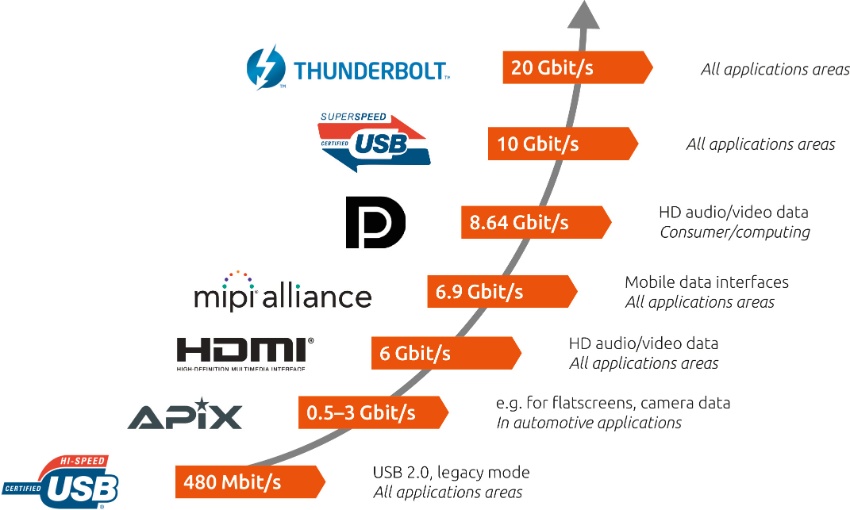Car manufacturers are integrating more electronics into their infotainment systems that allow us to connect easily to our personal digital environment. That means more recognized ‘consumer’ interfaces and connections are being used in the noisy car environment. By qualifying proven Nexperia TrEOS ESD protection technology to automotive standards, infotainment system designers now have the robust ESD protection they need for in-car USB, HDMI and LVDS interfaces.
Increasingly we want to be able to connect our personal devices to our car, to listen to music, play games or watch movies. Or upload data to make our journeys more personalized and entertaining – especially when the car we are using is not our own. But it is more than that. From a safety perspective more Advanced Driving Assistance Systems (ADAS) are being linked into integrated information systems, which are rapidly becoming the critical interface between the car and us as drivers or passengers.

All this is driving demand for more and more connectivity within vehicles using standard high-speed consumer and computing interfaces – from USB (3.2 / 2.0) and HDMI to LVDS, SerDes and SD-card interfaces. Our NexperiaTrEOS technology has set the industry benchmark for ESD protection for these interfaces since its launch in 2015. By qualifying the technology for the automotive sector, naturally extends its robust protection into the growing infotainment application space. Allowing automotive design engineers to empower their new systems with the efficiency of TrEOS ESD protection while improving system-level robustness and saving board space.
All round automotive protection
With the addition of Automotive TrEOS technology to Nexperia’s automotive portfolio, we now offer automotive designers the robust ESD protection they need for every system. From the ethernet backbone in new cars (OPEN Alliance: Get the right ESD protection placement) to the dedicated automotive networks that connect powertrain, chassis and body electronics (PESDxIVN – the ideal choice to safe-guard network transceivers). Now specific automotive applications including infotainment, multimedia and ADAS systems featuring USB 3.2, HDMI, LVDS, SerDes and SD-card interfaces can benefit from proven ESD protection.

Automotive TrEOS portfolio
Like all Nexperia‘s TrEOS products, our automotive qualified devices for infotainment designs offer the ideal combination of low capacitance, low clamping voltage and high ESD robustness. They use the same active silicon-controlled rectification technology to overcome the traditional protection trade-off challenge. The result is capacitance is kept down to 0.5 pF, clamping voltage is just 3 V and devices can withstand surge and ESD pulses up to 10 A 8/20 µs.
Meaning the AEC-Q101 qualified TrEOS PESD2USBx-T series can help safeguard 10 Gbps data lines systems in automotive applications against ESD and surge events. And this industry-leading performance comes in the proven SOT23 package, delivering additional performance and space savings for all infotainment applications. Throughout 2020 and beyond, Nexperia will continue to offer TrEOS ESD protection ranging from 2 to 10 pin leadless packages allowing miniaturization while improving system-level ESD robustness.